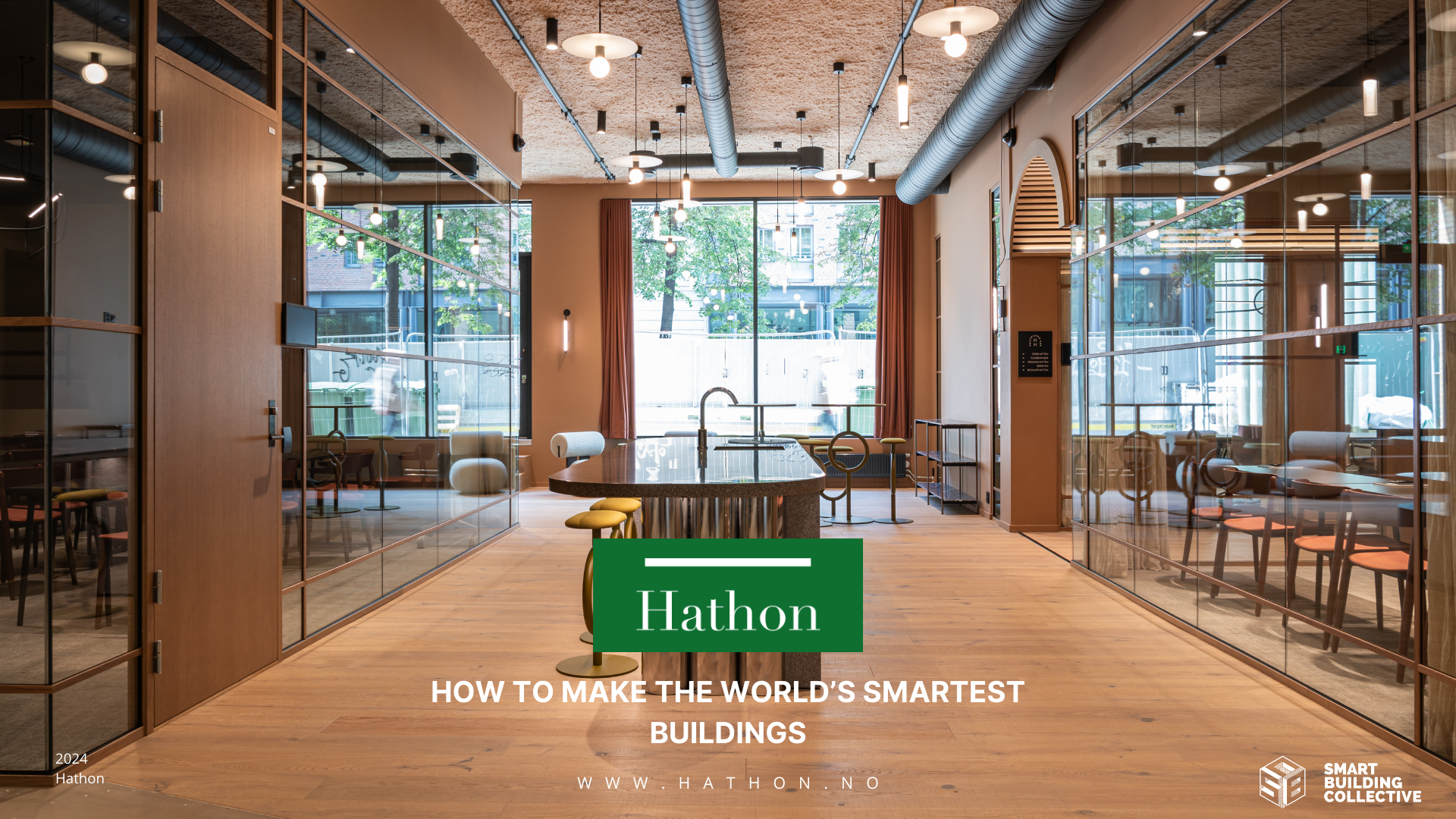 Image 1 of 1
Image 1 of 1


HOW TO MAKE THE WORLDS SMARTEST BUILDING
The goal of this report is to share guidance and advice to help stakeholders in the built environment industry transition towards smarter buildings, using examples from some of the smartest buildings in the world. This report is centered around the Smart Building Certification Platinum certified Hausmanns Hus by Hathon in Oslo, Norway. In doing so, this report also highlights some of the environmental, economic, and social benefits of smart buildings.
A smart building refers to the application of data to drive autonomous controls or building automation to deliver improved building performance. The key to a smart building is that the data is used to inform decisions and make adjustments that lead to better buildings.
Smart buildings are becoming more and more popular as they offer many benefits over conventional buildings, including improved sustainability, healthier building users and a better business case for building owners and investors.
Approaches to build smart buildings are evolving and it can be difficult to realize this vision in an industry that is known for progressing incrementally. To build the smartest buildings requires:
Setting a clear goal and committing to it 100%, even if that means committing a higher initial budget
Clearly defining the vision for the building and identifying smart features needed to achieve this vision from Day 1
Bringing stakeholders along so that everyone involved in the building process (designers, engineers, installers, investors) understand the benefits and quality improvements that come with smart features
Committing to continued (scientific) research to refine and further improve so the building lives up to its full potential
Getting a third-party smart building certification to avoid “smartwashing” and to truly understand how smart your building is and areas for improvement
The more smart buildings that are built, the more the level of knowledge about smart features within the industry as a whole will increase. In the longer term, the impacts of the smart features will truly be understood, quantified, and qualified, as more smart buildings are managed and operated and more research into building performance is conducted. To be a leader in the field of smart buildings it is important to be curious, willing to learn, willing to be transparent and to collaborate and share with your peers and building stakeholders.
The goal of this report is to share guidance and advice to help stakeholders in the built environment industry transition towards smarter buildings, using examples from some of the smartest buildings in the world. This report is centered around the Smart Building Certification Platinum certified Hausmanns Hus by Hathon in Oslo, Norway. In doing so, this report also highlights some of the environmental, economic, and social benefits of smart buildings.
A smart building refers to the application of data to drive autonomous controls or building automation to deliver improved building performance. The key to a smart building is that the data is used to inform decisions and make adjustments that lead to better buildings.
Smart buildings are becoming more and more popular as they offer many benefits over conventional buildings, including improved sustainability, healthier building users and a better business case for building owners and investors.
Approaches to build smart buildings are evolving and it can be difficult to realize this vision in an industry that is known for progressing incrementally. To build the smartest buildings requires:
Setting a clear goal and committing to it 100%, even if that means committing a higher initial budget
Clearly defining the vision for the building and identifying smart features needed to achieve this vision from Day 1
Bringing stakeholders along so that everyone involved in the building process (designers, engineers, installers, investors) understand the benefits and quality improvements that come with smart features
Committing to continued (scientific) research to refine and further improve so the building lives up to its full potential
Getting a third-party smart building certification to avoid “smartwashing” and to truly understand how smart your building is and areas for improvement
The more smart buildings that are built, the more the level of knowledge about smart features within the industry as a whole will increase. In the longer term, the impacts of the smart features will truly be understood, quantified, and qualified, as more smart buildings are managed and operated and more research into building performance is conducted. To be a leader in the field of smart buildings it is important to be curious, willing to learn, willing to be transparent and to collaborate and share with your peers and building stakeholders.
